Indonesian travelling shows where dolphins perform in the name of education
More than 90 dolphins are held in captivity in Indonesia and trained to perform tricks in shows as part of the country’s so-called conservation efforts. Their future is uncertain as the government continues experimenting with a captive breeding programme to increase dolphin population in its waters.

Indonesia is believed to be the only country in the world that still uses dolphins in travelling animal shows. Most of them perform more than 30 times a week and travel from city to city in the back of a truck. (Photo: Pichayada Promchertchoo)
JAKARTA: Brama and Kumbara swim side by side in their little home, a murky plastic pool full of chlorinated water. The two bottlenose dolphins seem agitated ahead of the show in which they are a headline act; it involves performing the same maneuvers they have done thousands of times.
These are two of the last remaining dolphins in the world that still perform in travelling wildlife shows - a popular yet highly controversial business in Indonesia.
For animal advocates, the practice is among the worst forms of cruelty and exploitation. Years of constant confinement, food deprivation and loud noise during the show are believed to harm both their physical and mental health, resulting in stress, aggression and premature death.
Whenever the troop relocates, dolphins are put on stretchers and confined in a tank for 10-20 hours. Most of them are transported from city to city in the back of a truck, where other show animals such as sun bears, otters and cockatoos are locked up in small cages.
“The staff will put butter or Vaseline cream on the dolphin’s skin to keep it moist because it’s dry transport,” said Femke Den Haas, a founder of the Jakarta Animal Aid Network (JAAN), who has been working with wildlife for more than 20 years.
Since 2009, her organisation has been at the forefront of a campaign against such animal shows, collecting data on the use of dolphins for entertainment. It strongly condemns the travelling dolphin shows and is calling for the animals’ rehabilitation and return to the wild.
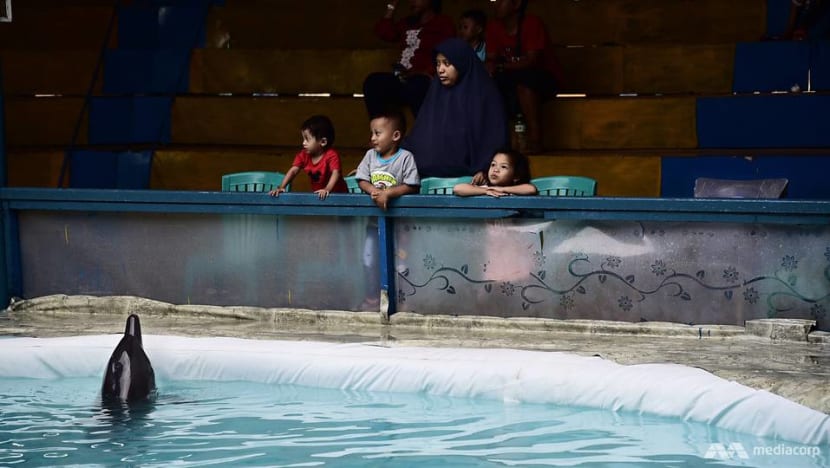
“Dolphins are highly intelligent, social and acoustic animals. They use their sonar to navigate in the ocean. But when they’re trapped in a small pool, their sound constantly bounces back at them. And they go crazy. It’s like we live in a room full of mirrors and all you see is yourself all the time. You’d go mental.
“What’s happening to dolphins in Indonesia is extremely, extremely cruel.”
But for the government, it is not. Travelling dolphin shows are considered an effective conservation tool that educates people about threatened animals through entertainment. As long as their health needs are met, the show can go on.
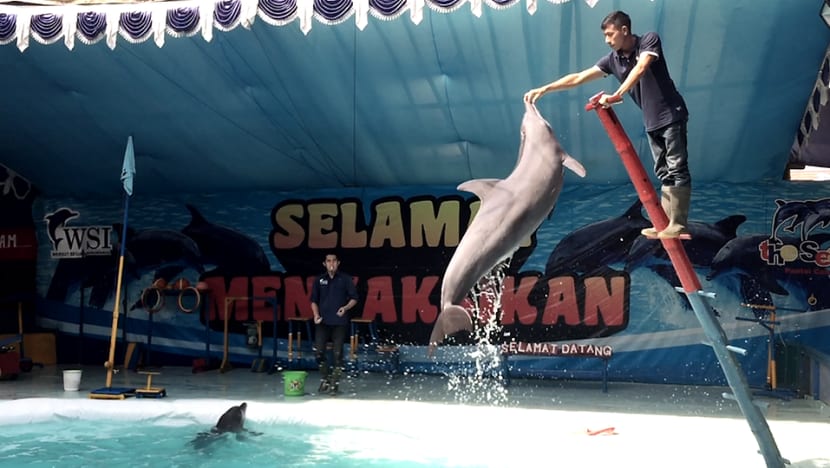
“Travelling dolphin shows exist to raise people’s awareness on saving them from extinction. The animals face a lot of problems in the wild. Many of them have been killed or caught by fishermen. So we have to save and rescue them.”
These are words from Mr Bambang Dahono Adji, director of Indonesia’s Biodiversity Conservation Directorate of the Environment and Forestry Ministry. His unit is responsible for issuing the conservation permits which allow the private sector to keep wild dolphins outside their natural habitat for conservation. It also recognises the legality of travelling wildlife shows.
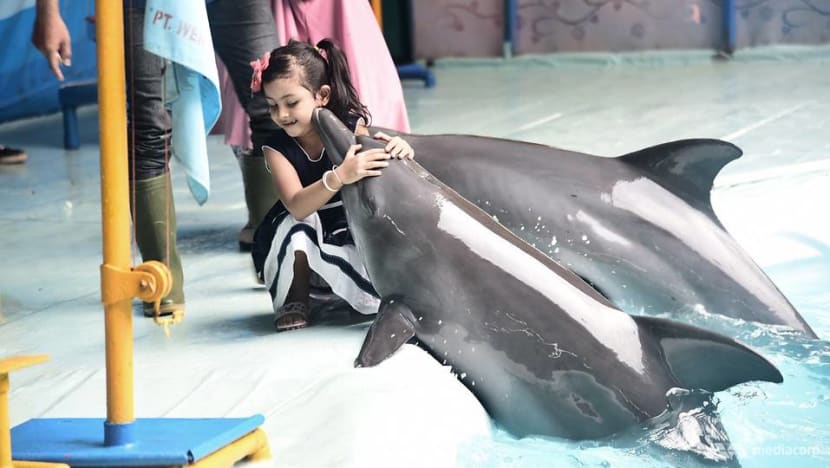
“People’s understanding about dolphins is minimal. But if they see the performance, they’d think ‘Oh! Dolphins are like this! Oh! They cannot be killed! These animals must be protected!’. So I allow it because it’s part of the efforts to raise public awareness,” Mr Adji explained.
"PURE ENTERTAINMENT FOR PROFITS"
An hour’s drive from the capital Jakarta, a circus tent stands on a football field in Bekasi. Signs on its dusty canopy say the troop belongs to PT Wersut Seguni Indonesia (WSI), a private company that runs most of the travelling dolphin shows in the country.
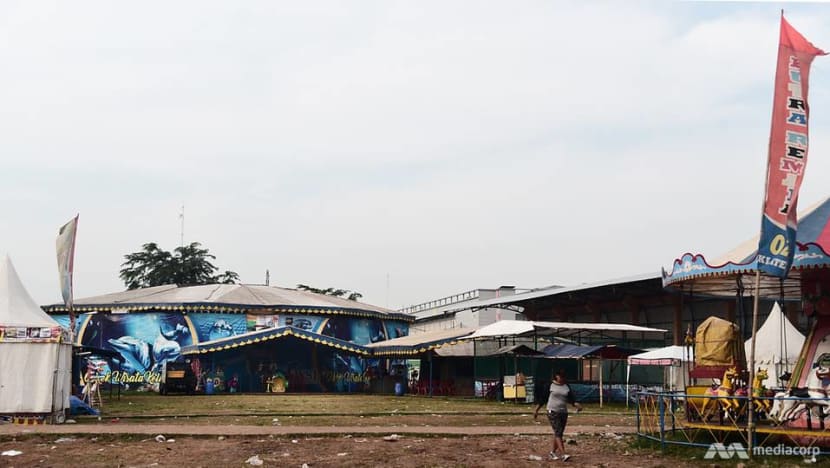
Inside, Brama and Kumbara are circling their plastic pool. The enclosure is tiny, compared to their natural home in the Java Sea.
“Dolphins are not fish but marine mammals that breathe with lungs,” a male voice explains in the local language, alternating with blaring music from loudspeakers. “They live in the sea and have vertical tail fins, which make them different from fish.”
The brief introduction is considered educational by the government and helps justify the show’s existence. But for animal activists, this piece of information is nothing more than an excuse to keep the business running amid criticisms.
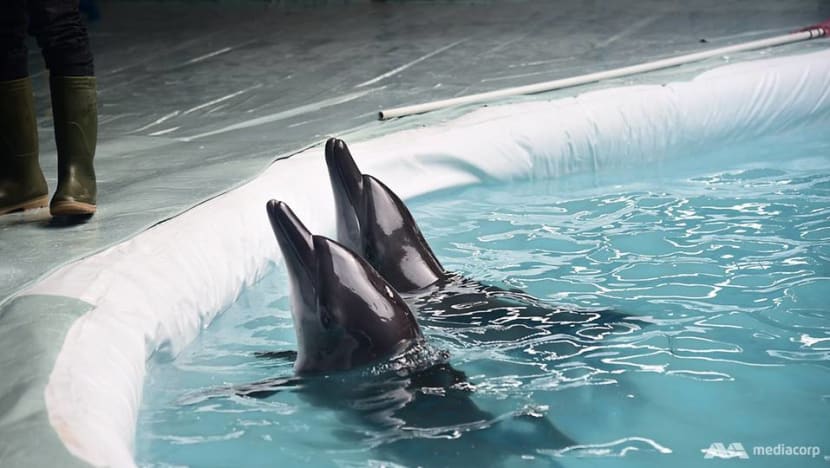
“Dolphins are taken from their habitat, where they can swim 100km a day, at the speed of 40kmh. And here they are, inside a small pool, having to go around in circles and work for pieces of fish that don’t even resemble their natural food,” Den Haas said.
“Everything these dolphins are doing goes against their natural behaviour. There is nothing educational. It is a show, pure entertainment for profits.”
DOLPHIN’S SMILE - "NATURE’S GREATEST DECEPTION"
In Bekasi, the show debuts with a cockatoo, followed by two otters and a baby sun bear. Ripples of laughter fill the tent as the animals perform tricks unknown in the wild. The otters wow the crowd with a basketball game. And like an acrobat, one of them expertly balances on a rolling barrel before the bear cub shows off its squats, pull-ups and riding skill.
When their performances are over, Brama and Kumbara jump into the act. The pair follow every command with eagerness, speed and perfection. Months of training have taught them to jump through hoops, hug each other, wave, sing, dance and even play football with their tail fins. Every maneuver earns them a reward - small pieces of fish, a little amount at a time.
For many people, what they are seeing is intelligence at play. But for dolphin experts, it is hunger and desperation.
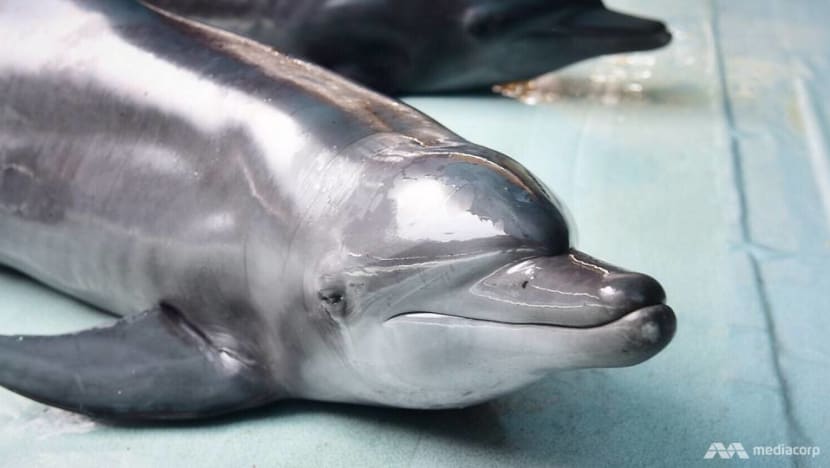
“Everything that a dolphin does in captivity is for food. If you go to a travelling dolphin show and know what to look for, you’ll see food deprivation,” Richard O’Barry told Channel NewsAsia. He is known for his role in capturing and training dolphins for the popular TV series Flipper.
“If you look at the dolphin’s eye line - not the smile on its face - you’ll notice it’s looking not at the trainer but the trainer’s hands and the pocket of fish. They just want to be fed so they’re forced to do all these stupid tricks.”
O’Barry spent about ten years of his life capturing and training dolphins. But since 1970, he has been campaigning for the exact opposite. His Dolphin Project strives to release captive dolphins worldwide, following the death of one of the Flipper dolphins, Kathy.
O’Barry has been to the travelling dolphin show in Indonesia several times. While the audience laughed and applauded, thinking the animals were having fun, the former dolphin trainer saw something else.
“I could read their body language and I could see the suffering behind the dolphins’ smiles. Their smile is nature’s greatest deception. It creates an optical illusion that they’re always happy when in fact they’re suffering.”
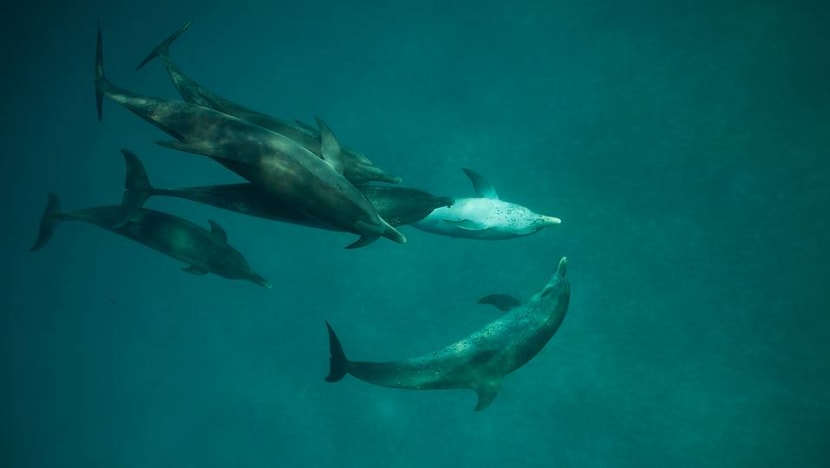
EXPLOITATION IN DISGUISE
Indonesia is believed to be the only country in the world that still uses dolphins in travelling shows. Of the four troops, three are run by WSI and one by Pembangunan Jaya Ancol (PJA).
Both companies are licensed conservation agencies that also own big amusement parks, where captive dolphins are trained to perform tricks and swim with visitors. These include WSI’s The Sea Pantai Cahaya in Kendal, Central Java, and PJA’s Taman Impian Jaya Ancol or Ancol Dreamland in North Jakarta.
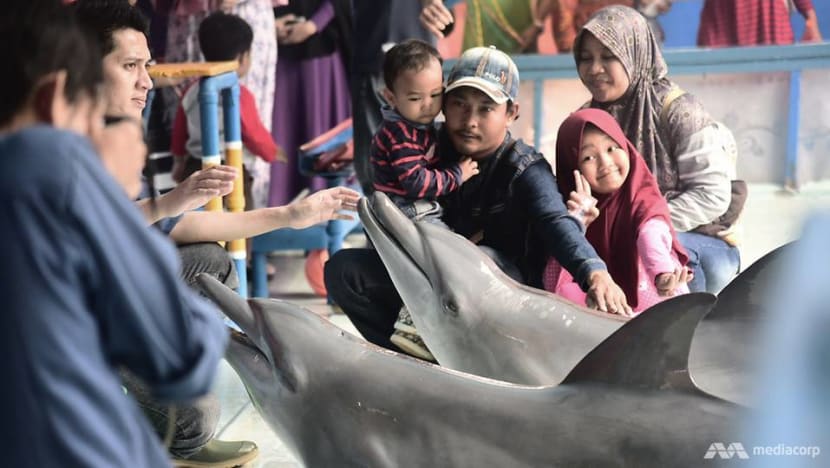
According to the Environment and Forestry Ministry, 92 dolphins are kept in captivity at tourist attractions, hotels and resorts nationwide. At least 70 of them were captured from the wild by fishermen, according to official data. The rest are believed to have been bred in captivity by seven conservation agencies, which also use dolphins for tourism.
Based on Indonesia’s law, it is illegal to “catch, injure, kill, keep, possess, care for, transport, and trade in a protected animal in live condition”. It is also illegal to transfer any protected animal from one place to another within or outside the country.

There is an exception, however. The acts mentioned above can be performed legally if the purpose is for research, science or safeguarding protected animals. The law also requires the preservation be carried out in a form of human care or breeding in captivity by designated institutions. This is where the controversy comes in.
INDONESIA’S DOLPHIN TRADE
It is unclear how the 70 captured dolphins ended up at tourist attractions, although they are considered to be conservation agencies by the government, with the authority and expertise to look after rescued dolphins.
Nonetheless, there are claims that some of the fishermen who captured the dolphins did so for financial reasons.
“In 2009, there was an announcement by Pantai Cahaya that it wanted to buy live dolphins,” a fisherman from Batang told Channel NewsAsia, referring to WSI’s conservation centre in Kendal - The Sea Pantai Cahaya.
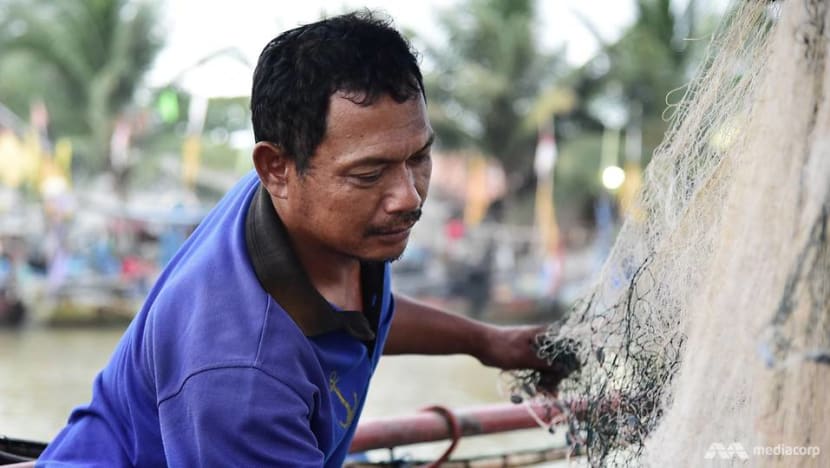
At the time, he was one of the crew on board a fishing boat that captured at least four dolphins for the facility.
“The captain told us not to throw them away because they had a price. People at Pantai Cahaya would buy them alive. So we covered them with wet clothes.”
According to the fisherman, the animals remained on the ship for ten hours before they docked in Kendal, where WSI employees were waiting with a six-wheeled truck. The dolphins, he said, were then transferred onto the vehicles.
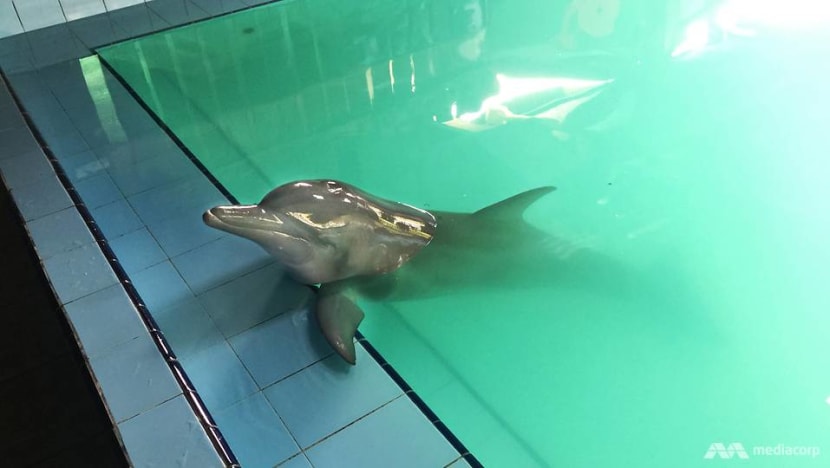
“All the fishermen who caught dolphins in 2009 sold them to Pantai Cahaya. They cost about US$400. A big one could fetch more than US$500. But they wouldn’t buy if it wasn’t a bottlenose dolphin.”
WSI’s operational director Dwe Seta did not respond to Channel NewsAsia’s interview request, while the company’s spokesperson declined to comment on dolphin-related issues.
DOLPHIN TOURISM
Dolphin conservation remains a grey area in Indonesia. During their rehabilitation and breeding programmes, many dolphins either have to perform tricks, swim with tourists or spend months in the circus.

This has raised questions about the underlying motive behind the captivity - whether it is conservation of a protected species or for profit.
For travelling shows such as the one in Bekasi, visitors pay US$3 for a standard ticket or US$4.5 to join the VIP row by the pool. Many of them also pay extra US$3 for an optional photograph with the dolphins. This means one circus group could earn more than US$4,000 in a month from 4-6 shows per day if it sells 10 standard tickets every round. Usually, the weekend shows see much bigger crowds.
Prices go up at big attractions such as Ancol Dreamland, where a ticket to watch animal shows costs US$12 per person.

As dolphin tourism continues to thrive, the use of the animals for entertainment has spread to hotels and resorts. Visitors to Wake Bali Dolphins pay US$110 for a 45-minute swim with the mammals in a chlorinated pool, and US$89 to watch them perform tricks. They can also join dolphin therapy” - a treatment the resort claims will help children with Down syndrome, autism and mental disorder develop self-confidence and social and academic skills.
The four dolphins were supplied by WSI’s conservation centre in Central Java. They are kept in a 10m x 20m pool right by the sea.
A WAIT FOR FREEDOM
Despite its knowledge of the animals’ conditions, the Environment and Forestry Ministry maintains every licensed dolphin conservation agency and attraction meets official standards. According to Mr Adji, evaluations are regularly carried out to ensure the facilities where the dolphins are kept are not harmful to them.
“The data is submitted by dolphin trainers and reflects the positive condition of the facilities. The atmosphere is caring and peaceful.”
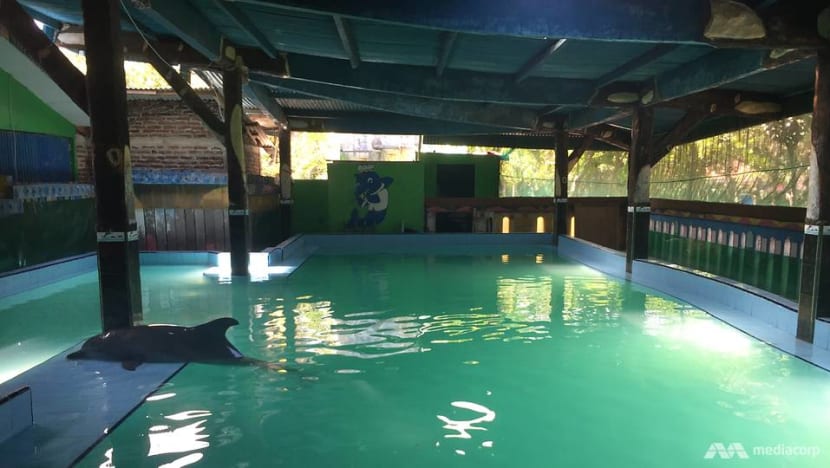
Besides the shows, Mr Adji said dolphin conservation efforts also include a breeding programme, which he hopes will increase the population of captive dolphins in the country by 10 per cent within five years.
However, animal activists question the programme’s effectiveness and transparency, citing a lack of scientific evidence to prove which dolphins were indeed captive-bred. Concerns have been raised over the possibility of wildlife laundering through breeding centres, as none of the captive dolphins are microchipped.
“It’s very hard to trace where they come from or when they arrived at the conservation centres. It’s also very easy for the show owners to play around with this data and lie to the authorities,” Den Haas said.
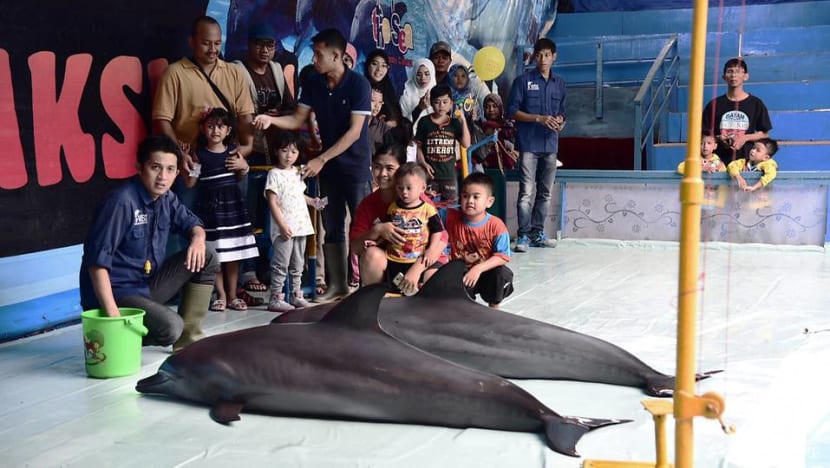
For monitoring purposes, her organisation has provided the Environment and Forestry Ministry with microchips. “So far, they haven’t been used yet. We’ve been asking the authorities so many times but it just never happened.”
Meanwhile, the dolphin rehabilitation centre in Karimun Jawa remains empty. It was completed in 2011 at the request of the Environment and Forestry Ministry, with support from O’Barry’s Dolphin Project. The centre is the first permanent facility in the world that is designed to rehabilitate and release captive dolphins back into the oceans.
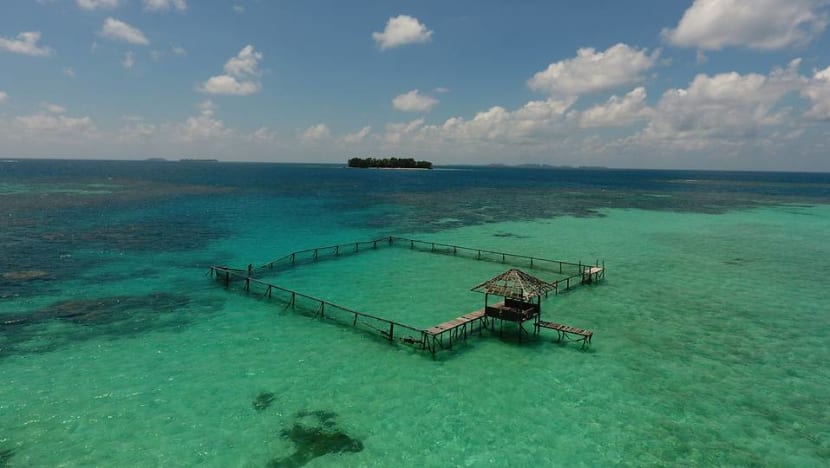
“At the very last minute, when we were supposed to confiscate the dolphins, the rug was pulled from under us. Unfortunately, somebody stopped this from happening,” O’Barry told Channel NewsAsia.
Six years on, the dolphin rehabilitation centre is still waiting for the patients. Although their arrival is yet to be decided, the founders are hopeful Indonesia will one day let the dolphins go home.
While the wait drags on, dolphin tourism continues to thrive.
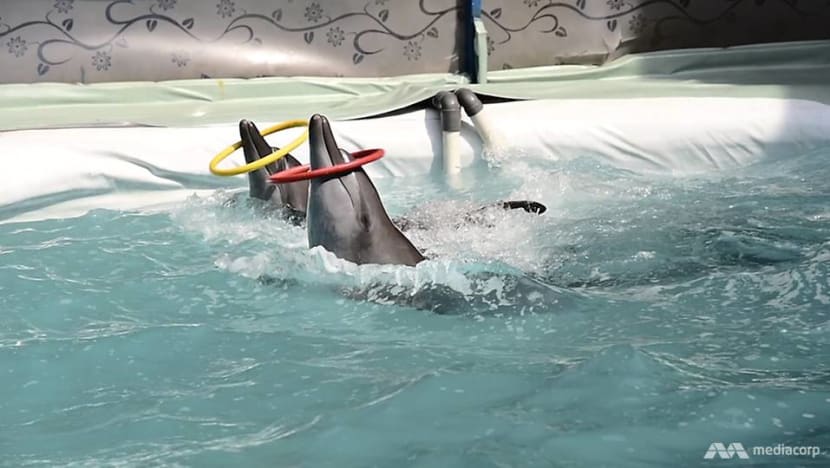
In Bekasi, Brama and Kumbara almost finish their first performance of the day. On a signal, the two dolphins slide out of their little container onto the platform. They hold the heads and tail fins up high as people come to pose for photographs.
There are still five more shows to go, more people to please and more food to work for before the tent closes. But as always, both of them are wearing the happy dolphin’s smile.














